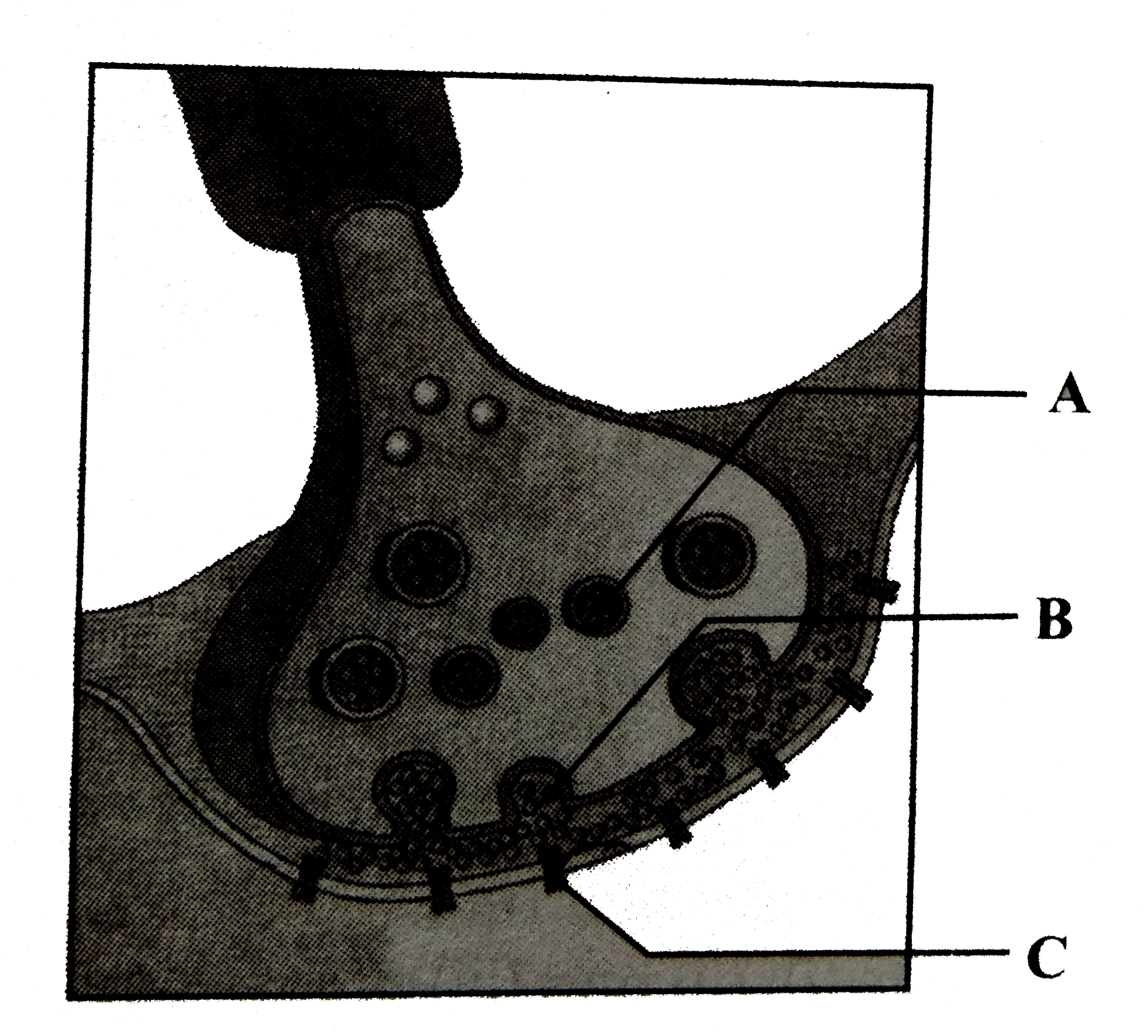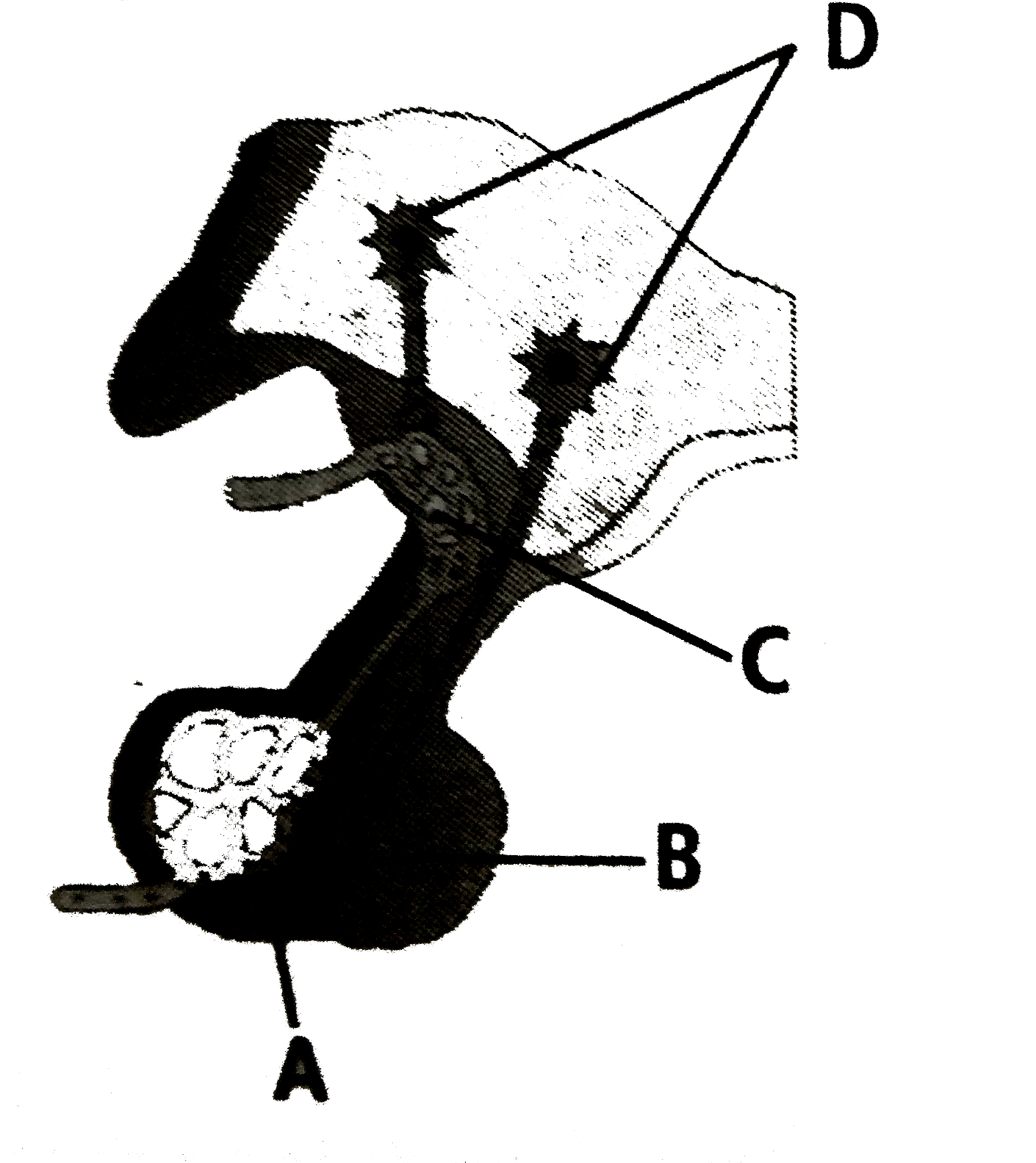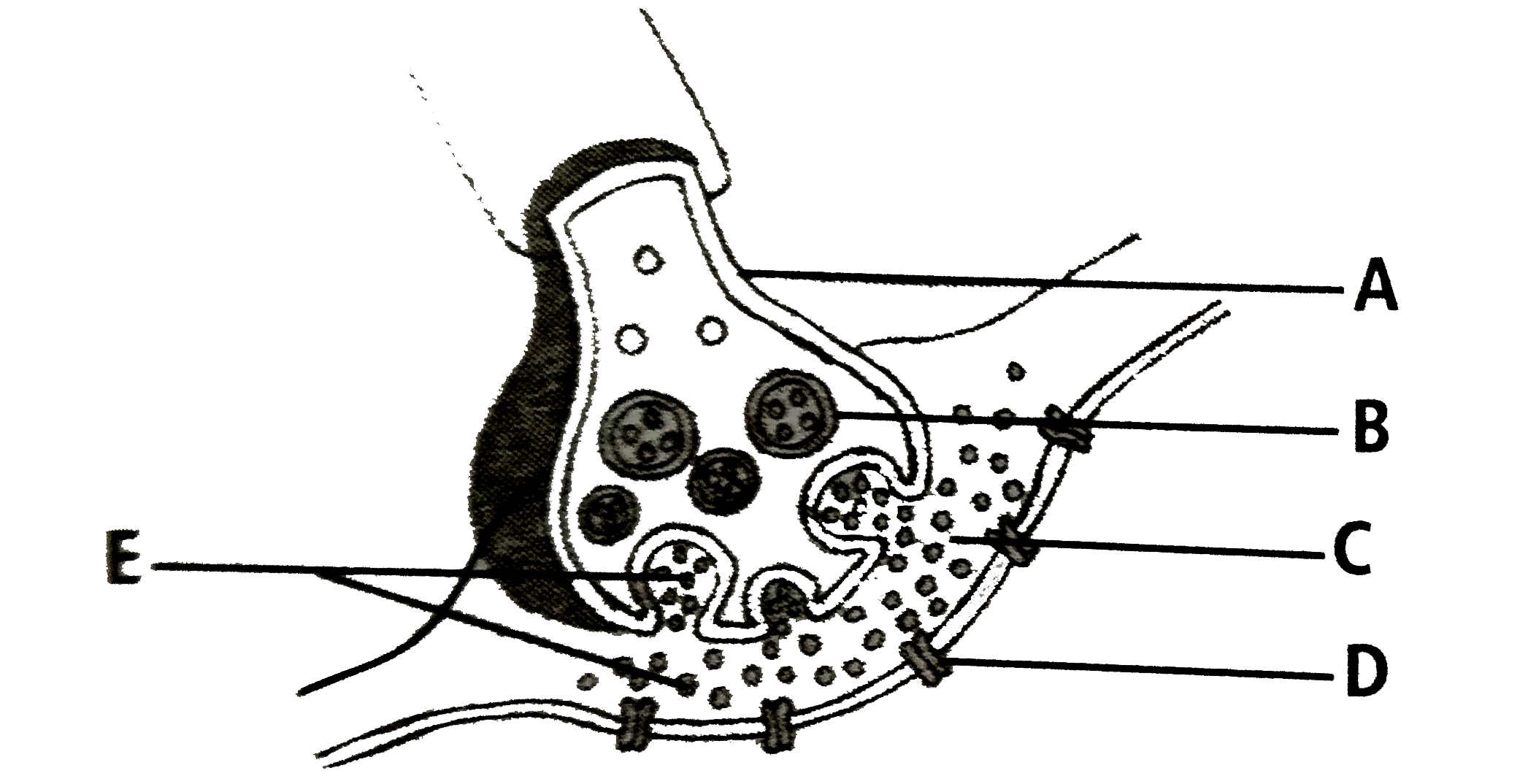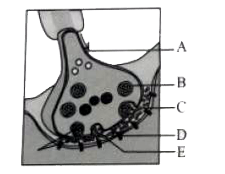The given diagram shows axon terminal.Select the option that correctly matches the steps in transmission of impulses (list i-vii) with the labellings (A-C) in diagram.

(i)Chemicals called neurotransmitters are released in the synaptic cleft through ion channels.
(ii)When an impulse arrives at the axon terminal, it stimulates the movement of synaptic vesicles.
(iii)Neurotransmitters are endocytosed into the neurons.
(iv)The ions channels close with the binding of neurotransmitters to their specific receptors vesicles.
(v)Synaptic vesicles move towards the membrane where they fuse with the plasma membrane.
(vi)Neurotransmitters are released in the synaptic cleft.
(vii)The released transmitters bind to their specific receptors on post-synaptic membrane
A
B
C
D
Video Solution
Text Solution
The correct Answer is:C
NA
|
Topper's Solved these Questions
Similar Questions
Select the option that correctly identifies the labels A,B, C and D in the given diagram.

View SolutionAssertion Arival of an impulse at the axon terminal stimulates the release of neurotransmitters in synaptic cleft.
Reason These neurotransmitters are responible for the opening of ion channels.
View Solution
Knowledge Check
A synaptic cleft is
Athe space present inside the presynaptic neuronBthe space present inside the postsynaptic neuronCthe space separating the pre and postsynapitc neuronsDthe space present inside the synaptic vesiclesDuring transmission of nerve impulse, the released neurotransmitter bind to their specific receptors, present on the
APre-synaptic membraneBPost-synaptic membraneCBoth A and BDSynaptic vesiclesSynaptic vesicles contains chemicals called
Asynaptic fluidBneurotransmittersCvesicular fluidDall of the above
The given diagram shows axon terminal and synapse. Here A,B,C,D and E respectively represent

View SolutionThe given diagram shows axon terminal and synapse. Here A,B,C,D and E, respectively represent.

View SolutionAxon endings release from ints synaptic vesicles , a neuro-transmitter substance known as
View SolutionChemicals which are released at the synaptic junction are called
View SolutionChemicals which are released at the synaptic junction are called
View Solution

